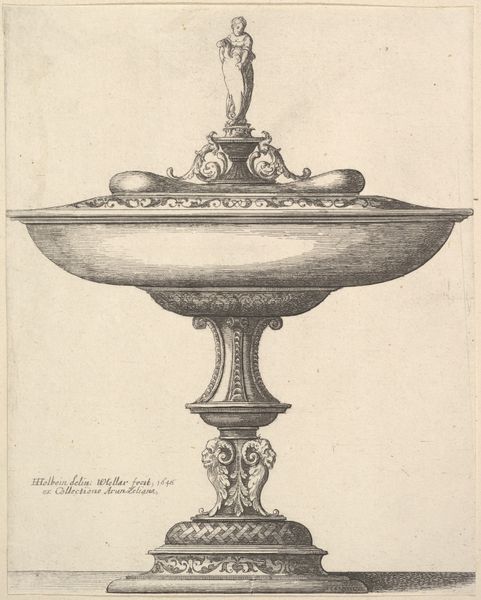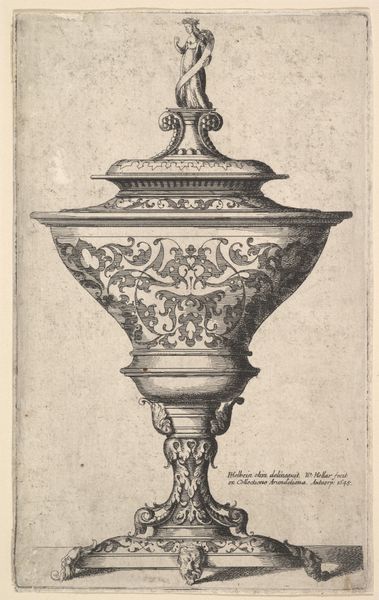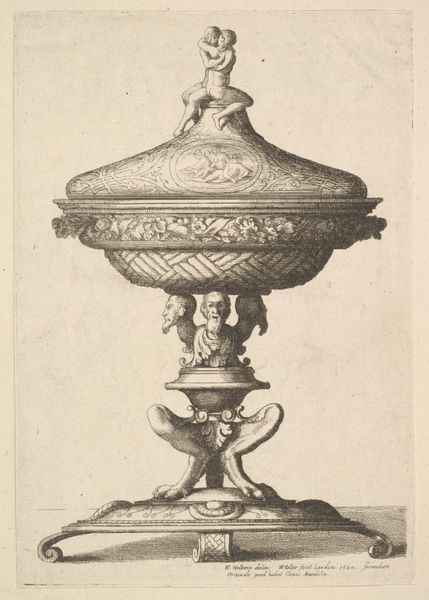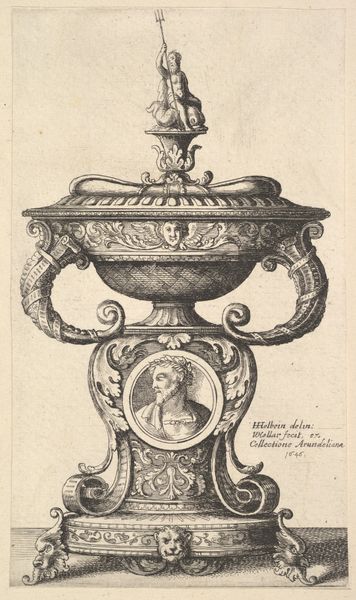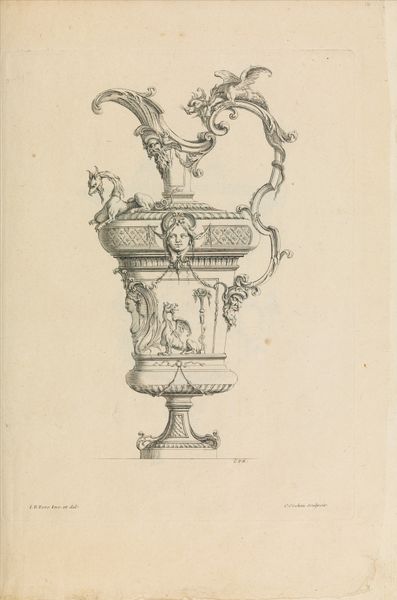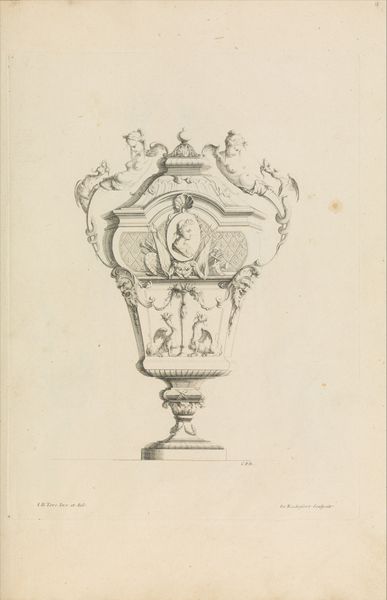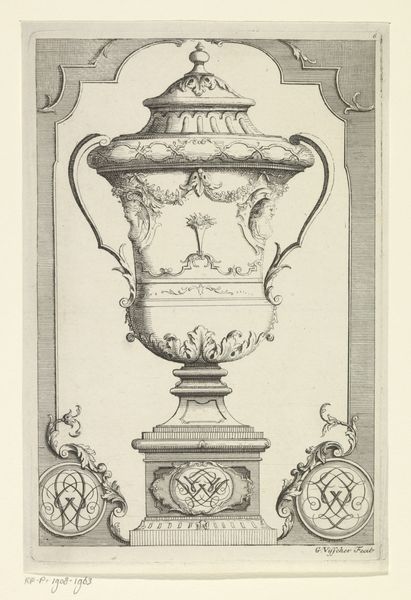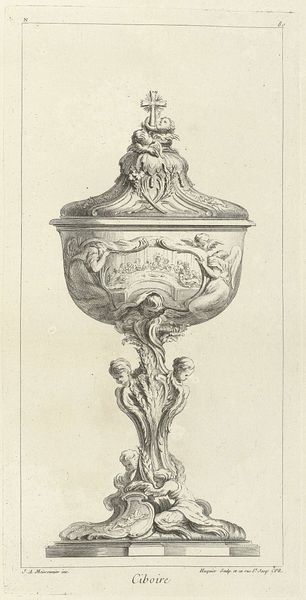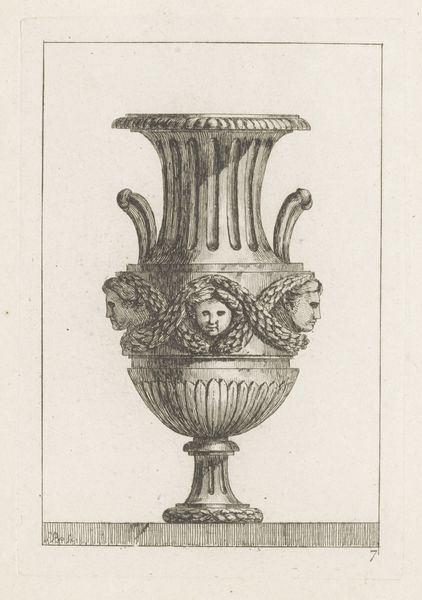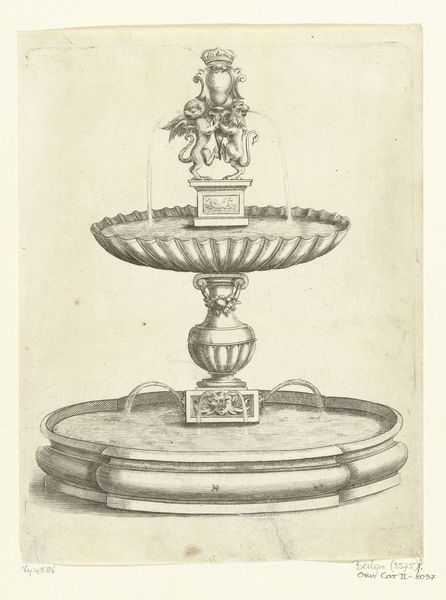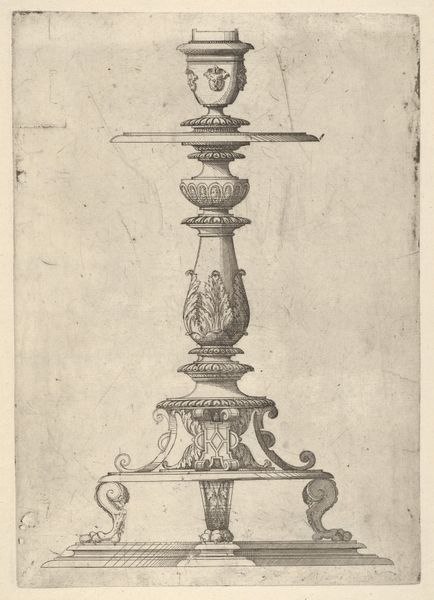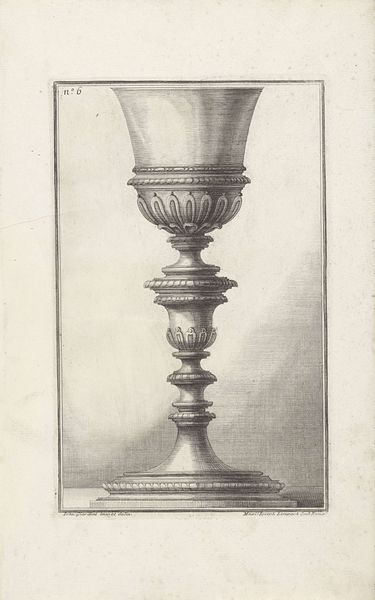
drawing, graphic-art, print, metal, engraving
#
drawing
#
graphic-art
#
baroque
# print
#
metal
#
engraving
Dimensions: Sheet: 6 9/16 × 4 3/4 in. (16.7 × 12 cm) cut just outside the platemark
Copyright: Public Domain
Editor: So, we're looking at "A wide cup with ball feet" created in 1646 by Wenceslaus Hollar. It's an engraving, giving the metalwork depicted a fantastic shimmering effect. I find it interesting how it elevates an everyday object, what can you tell us about this piece? Curator: What’s immediately striking is that this print mediates an object for elite consumption, probably silver or gilt. Hollar doesn’t simply depict it; he renders its textures and intricate details. Notice how the engraver carefully articulates the ornament; the status and aspirations of those who commissioned such elaborate pieces is literally materialized within this image. How do you think this print alters the nature of that consumption? Editor: That’s a good point, the print flattens it, making it widely available in a way the object itself never could be, democratising it in some sense. Would such a print serve a practical purpose as a record or even inspiration? Curator: Precisely. This image allows the sharing of luxury across geographical and social boundaries, influencing taste and material aspirations. Furthermore, it provides workshops and artisans visual models, fueling and standardising production of fashionable goods on an expanded scale. Where would you locate this piece on the spectrum between art and craft? Editor: I think this piece really breaks down the divide between the two, it highlights skill and precision as an artisan’s proof. It suggests that craft objects hold the same design considerations as something we may see hung in a gallery. Curator: Exactly. It urges us to reconsider hierarchical categorisations of artistic labour. Reflecting on the production process reveals so much more about both the object and its cultural context.
Comments
No comments
Be the first to comment and join the conversation on the ultimate creative platform.
